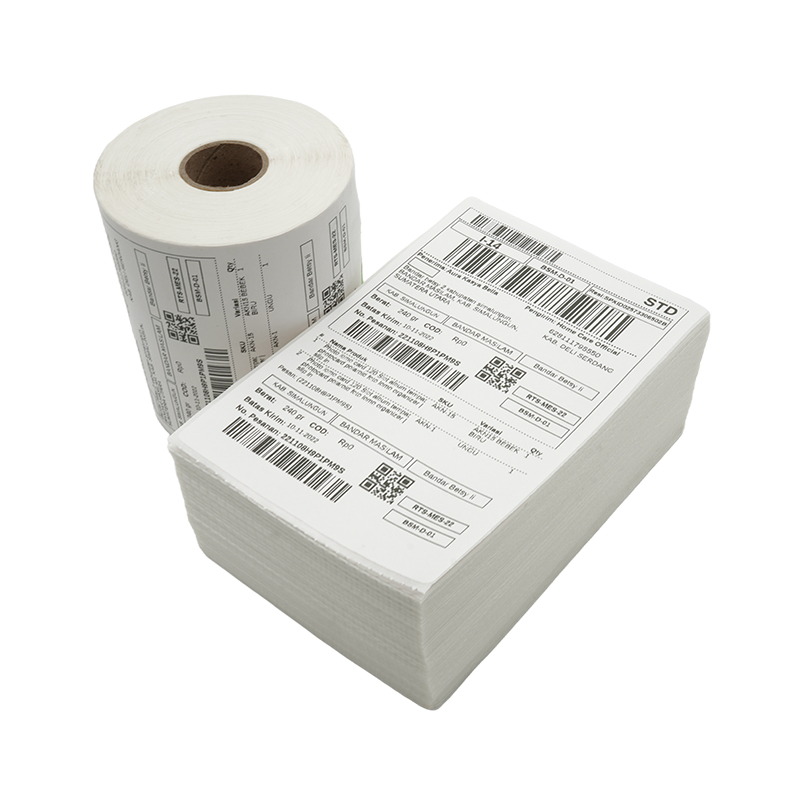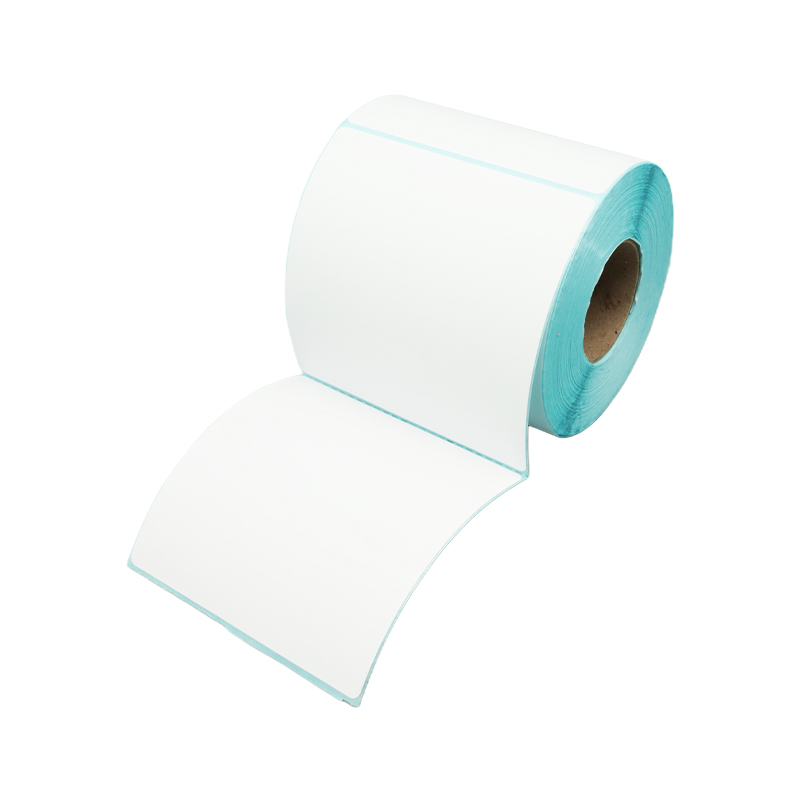How does the waterproof coating process of three-proof thermal label paper ensure long-term moisture resistance?
Release Time : 2025-10-18
The waterproof coating process for three-proof thermal label paper is the core technology that achieves long-term moisture resistance. Through material selection, coating structure design, and process optimization, a multi-layered protection system is constructed. Its core principle is to block moisture penetration while maintaining the label's flexibility and thermal color stability, thereby preserving information clarity and structural integrity in humid environments.
In terms of material selection, the waterproof coating for three-proof thermal label paper typically utilizes polymer materials, which exhibit excellent hydrophobicity and chemical stability. For example, fluoropolymers or silicone-modified resins can reduce surface energy, causing water droplets to form spherical shapes on the label surface and slide off quickly, reducing the time it takes for water to adhere. These materials also exhibit excellent compatibility with the thermal coating and paper base, preventing moisture-proof performance loss due to coating delamination. Some high-end products also incorporate nano-scale inorganic fillers to create a dense microstructure that further blocks moisture penetration.
In terms of coating structure design, three-proof thermal label paper often utilizes a multi-layer composite process. The bottom layer is an adhesive layer that tightly bonds to the paper substrate, ensuring the coating does not peel in humid environments. The middle layer is a functional waterproof layer, which forms a three-dimensional network structure through a cross-linking reaction, enhancing the coating's density and impermeability. The top layer is an abrasion-resistant protective layer, preventing the coating from being damaged by friction and reducing moisture retention through its smooth surface. This layered design enables the label paper to achieve long-term moisture resistance through the synergistic effect of each layer in environments with varying humidity.
Process optimization is key to ensuring stable waterproof performance. During the coating process, precise control of coating thickness and uniformity is required. Too thin a coating will result in moisture-proof blind spots, while too thick a coating may affect the efficiency of thermal color development. Advanced slot die coating technology enables micron-level coating control. Combined with infrared drying, it allows for rapid curing of the waterproof layer without damaging the thermal coating. In addition, some manufacturers use plasma treatment to modify the paper substrate surface to strengthen the adhesion between the coating and the paper substrate and prevent blistering or peeling of the coating due to changes in ambient humidity.
Environmental compatibility testing is a key step in verifying waterproof performance. Three-proof thermal label paper undergoes high-temperature, high-humidity cycling testing to simulate usage scenarios under extreme climate conditions. During testing, the labels are exposed to temperatures of 85°C and 85% relative humidity for hundreds of hours to ensure no wrinkling, discoloration, or blurring of the information. Low-temperature moisture resistance testing is also essential, with some products required to maintain flexibility at -20°C to prevent cracking of the coating due to low-temperature embrittlement.
Compared to ordinary thermal paper, the waterproof coating of three-proof thermal label paper significantly improves its environmental adaptability. Ordinary thermal paper easily absorbs water and expands in humid environments, blurring the text. However, the coating on three-proof thermal label paper blocks moisture, ensuring long-term readability. Furthermore, the waterproof properties of three-proof thermal label paper, combined with its oil and scratch resistance, create a synergistic effect, making it irreplaceable in high-humidity environments such as catering and logistics.
The waterproof coating of three-proof thermal label paper has been widely validated in practical applications. In cold chain logistics, label paper must withstand temperatures as low as -18°C and frequent temperature fluctuations. Its waterproof coating ensures that barcode information remains legible even after thawing. In the medical field, label paper must withstand frequent disinfectant wipes. The combination of a waterproof coating and chemical resistance makes it an ideal choice for pharmaceutical traceability.
The waterproof coating process for three-proof thermal label paper utilizes innovative materials, structural design, and process optimization to create a comprehensive moisture-proof system. Its core technology lies in balancing waterproof performance with thermal color development efficiency while meeting environmental adaptability requirements in diverse scenarios. With advancements in materials science and coating technology, the moisture-proof performance of three-proof thermal label paper will continue to improve, providing more reliable solutions for industrial labeling, logistics tracking, and other fields.







